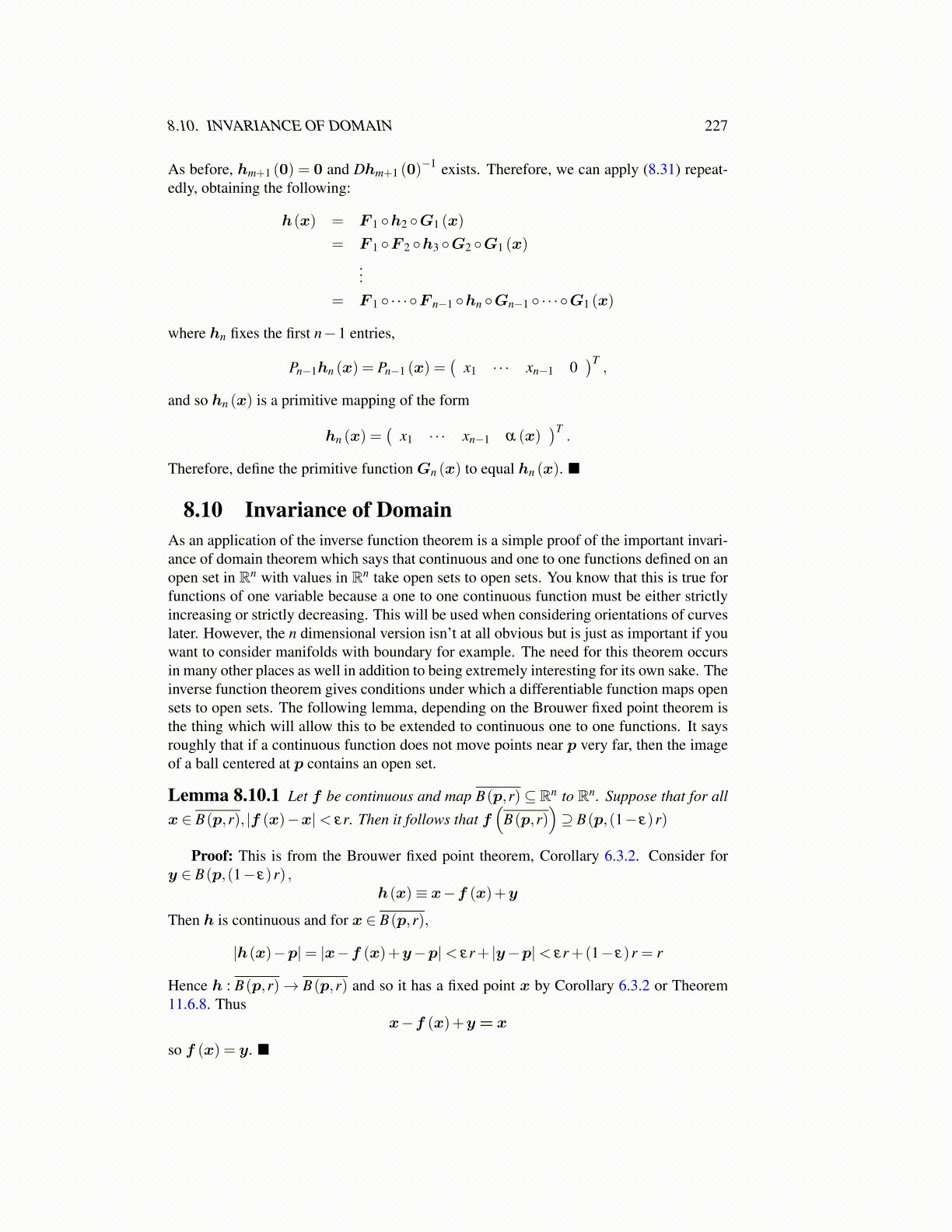
8.10. INVARIANCE OF DOMAIN 227
As before, hm+1 (0) = 0 and Dhm+1 (0)−1 exists. Therefore, we can apply (8.31) repeat-
edly, obtaining the following:
h(x) = F 1 ◦h2 ◦G1 (x)
= F 1 ◦F 2 ◦h3 ◦G2 ◦G1 (x)
...= F 1 ◦ · · · ◦F n−1 ◦hn ◦Gn−1 ◦ · · · ◦G1 (x)
where hn fixes the first n−1 entries,
Pn−1hn (x) = Pn−1 (x) =(
x1 · · · xn−1 0)T
,
and so hn (x) is a primitive mapping of the form
hn (x) =(
x1 · · · xn−1 α (x))T
.
Therefore, define the primitive functionGn (x) to equal hn (x). ■
8.10 Invariance of DomainAs an application of the inverse function theorem is a simple proof of the important invari-ance of domain theorem which says that continuous and one to one functions defined on anopen set in Rn with values in Rn take open sets to open sets. You know that this is true forfunctions of one variable because a one to one continuous function must be either strictlyincreasing or strictly decreasing. This will be used when considering orientations of curveslater. However, the n dimensional version isn’t at all obvious but is just as important if youwant to consider manifolds with boundary for example. The need for this theorem occursin many other places as well in addition to being extremely interesting for its own sake. Theinverse function theorem gives conditions under which a differentiable function maps opensets to open sets. The following lemma, depending on the Brouwer fixed point theorem isthe thing which will allow this to be extended to continuous one to one functions. It saysroughly that if a continuous function does not move points near p very far, then the imageof a ball centered at p contains an open set.
Lemma 8.10.1 Let f be continuous and map B(p,r)⊆ Rn to Rn. Suppose that for all
x ∈ B(p,r), |f (x)−x|< εr. Then it follows that f(
B(p,r))⊇ B(p,(1− ε)r)
Proof: This is from the Brouwer fixed point theorem, Corollary 6.3.2. Consider fory ∈ B(p,(1− ε)r) ,
h(x)≡ x−f (x)+y
Then h is continuous and for x ∈ B(p,r),
|h(x)−p|= |x−f (x)+y−p|< εr+ |y−p|< εr+(1− ε)r = r
Hence h : B(p,r)→ B(p,r) and so it has a fixed point x by Corollary 6.3.2 or Theorem11.6.8. Thus
x−f (x)+y= x
so f (x) = y. ■